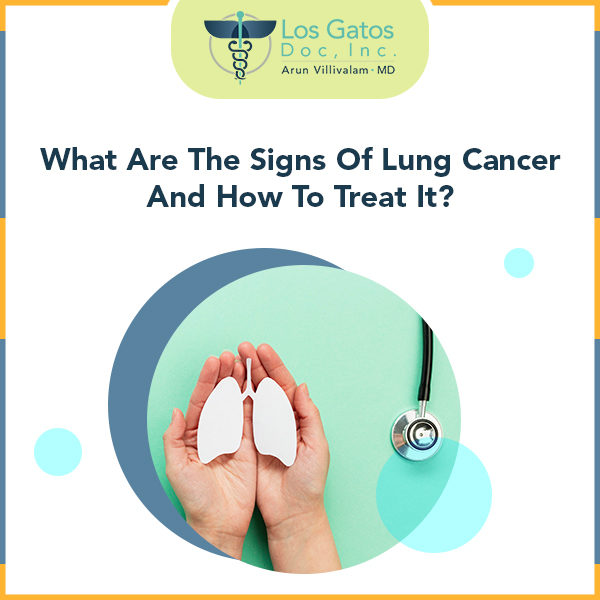Lung cancer is the third most common type of cancer and the leading cause of cancer-related deaths worldwide.
Smoking is a major risk factor for lung cancer. Lung cancer can be fatal if not diagnosed and managed effectively.
In this article, you will learn what lung cancer is, the types of lung cancer, the causes of lung cancer, symptoms, and management tips.
What is Lung Cancer?
Cancer is a disease where healthy cells in your body divide and grow out of control without repair or dying, as normal cells usually do. These cancerous cells develop into tumors.
When cancer starts in your lungs, we call it lung cancer.
Your lungs are two organs that lie in your chest that take in oxygen during inhalation and release carbon dioxide when you exhale.
When you develop lung cancer, it can affect your ability to breathe and function normally.
Lung cancer can spread to other organs of your body and become fatal if not controlled.
Types of Lung Cancer
Lung cancers can be categorized into two main groups based on their appearance under the microscope. They multiply differently and are treated differently as well.
- Small cell cancer: This kind of lung cancer occurs mostly among heavy smokers. It is the lesser common kind of cancer, with around 13% of small cell cancer cases in America.
- Non-small cell cancer: This kind of lung cancer is more common than small cell lung cancer, with around 84% of non-small cell cancer cases in America. It includes several types of lung cancer, such as adenocarcinoma, squamous cell carcinoma, and large cell carcinoma.
Causes of Lung Cancer
Smoking or exposure to secondhand smoke is the leading cause of the majority of cases of lung cancer.
Smoking damages the cells that line your lungs with its carcinogenic ingredients. Repeated smoking causes these cells to grow and multiply abnormally, developing into lung cancer.
Lung cancer can occur in people who have never smoked or been around secondhand smoke, too. There are many causes and risk factors for lung cancer, including family history, previous radiation therapy to the chest, exposure to certain chemicals and carcinogens such as asbestos, and radon gas, apart from smoking and exposure to secondhand smoke.
Signs and symptoms
You will not notice any signs or symptoms of lung cancer in its early stages. According to the American Cancer Society, the symptoms occur in the advanced stages similar to a respiratory infection and may include:
- Fatigue
- Headache
- Hoarseness
- Persistent and worsening cough that may be bloody
- Fluid in the chest (pleural effusion)
- Shortness of breath
- Wheezing
- Chest pain
- Weight loss
- Blood clots
- Bone pain and fracture
- Frequent Bronchitis or Pneumonia
Preventive Tips For Lung Cancer
There are some causes or risk factors for lung cancer that are not in your control. But there are ways you can reduce your risk for lung cancer.
- Avoid or quit smoking and reduce your exposure to secondhand smoke
Smoking is responsible for around 80%-90% of lung cancer deaths in America.
Avoid or quit smoking. Even if you have been smoking for a while, quitting reduces your risk for lung cancer.
If you smoke, discuss the best strategies to help you quit smoking with your primary care doctor.
Talk to your children and other family members about the dangers of smoking and exposure to secondhand smoke.
- Get your home tested for radon
The United States Environmental Protection Agency (EPA) lists radon as the second leading cause of lung cancer and recommends that all homes be tested for radon.
You can get further information by contacting your local department of public health or the local chapter of the American Lung Association.
- Take precautions at the workplace
Be cautious when you are at the workplace.
Take precautions to reduce your exposure to carcinogens at work.
Be aware of your workplace health and safety guidelines and follow them diligently for protection.
- Eat nutritious food and exercise regularly
When you follow a healthy lifestyle, you develop immunity and lower your risk for several chronic conditions.
We suggest getting your vitamins and nutrients from a balanced diet of whole grains, fruits, and vegetables.
Exercise regularly for at least 30 minutes, 5 days a week. You can take small steps of exercising for 5-10 minutes a day if you haven’t already developed the habit.
- Visit your doctor regularly
Apart from regular doctor visits and screenings, you must consult your doctor if you have any lung cancer symptoms.
Depending on the stage of your lung cancer, your doctor will prescribe the best treatment options available for you.
Lung cancer treatment options can range from chemotherapy, immunotherapy, radiation therapy, and surgery.
Conclusion
Lung cancer can be prevented and managed effectively. It can be fatal if you neglect the telling signs and ignore early screenings and diagnosis.
There are good chances of survival if the condition is diagnosed early and managed under professional supervision.
If you have any queries or concerns about your risk for lung cancer, you can consult Los Gatos Doc, the best primary care doctor in Campbell, CA.
Disclaimer: We routinely draw upon public health resources to inform our write-ups. Information in this article may be drawn up from multiple public health sources, including:
- Centers for Disease Control & Prevention
- Medline Plus
- National Institutes of Health
- American Medical Association
- American Association of Family Physicians
- Mayo Clinic
- Family Doctor






